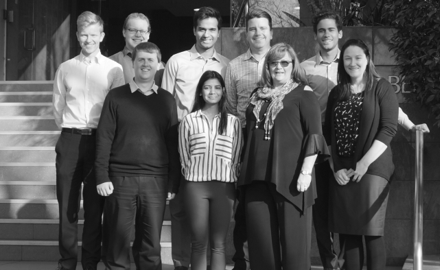
It’s Not Just About Your Will
By Jenny Brown – CEO and Founder
When we look at Estate Planning, the first thing that pops to mind is our Wills. After all, these legal documents dictate what will happen to our assets when we die. While this is a good start, you will more than likely have assets that are not covered by your Will and will need to be dealt with in a separate manner.
Jointly Owned Assets
 There are 2 ways to structure jointly held assets and both are treated differently for estate purposes. The first and more common way is what is known as ‘Joint Tenants’. In this scenario, if you were to die, the asset automatically goes to the other owner. For example, a husband and wife purchase a house as joint tenants, if the husband were to die, the wife would now own the entire house. It does not form part of his Will.
There are 2 ways to structure jointly held assets and both are treated differently for estate purposes. The first and more common way is what is known as ‘Joint Tenants’. In this scenario, if you were to die, the asset automatically goes to the other owner. For example, a husband and wife purchase a house as joint tenants, if the husband were to die, the wife would now own the entire house. It does not form part of his Will.
The second ownership structure is what is known as ‘Tenants in Common’. In this scenario the 50% (or whatever % you own) is not automatically passed over to the other owners, it does form part of your Estate and will be distributed through your Will. For example, 2 business owners purchase a commercial building 50/50 as tenants in common. If one were to die, their 50% would go to their estate and as an example end up being owned by their partner. Now there may be an agreement in place where the surviving business owner then buys the other persons share from their partner, however the partner does now own the 50% rather unlike a ‘Joint Tenants’ situation where the surviving owner would automatically be allocated the other 50%.
Assets held by Private Companies or unit trusts
Sometimes a person has assets held by a company that he or she owns. The person may own all the shares in the company and might be the only director of the company, and in so doing is able to use and enjoy the assets. Whilst the person might own the company, it is the company that owns the assets. Thus for example the person cannot in their Will give away the company car because they don’t own the item. It is a common mistake by business proprietors that they forget that assets they use personally are not theirs but instead belong to the company.
The only asset that the Will maker has is the ownership of the shares in the company, not any specific assets of the company.
Units in a unit trust are similar to companies in that any units owned by you, not the assets owned by the trust, will pass to your estate to be distributed as per your Will.
Assets held in Family Trusts
Assets held in a Family Trust are governed by the determinations of the trustee of the trust and are not assets owned by the person who set up the trust and transferred assets to it. Such a person is unable in their Will to distribute the assets of what they might regard as “my trust”. Control of the trust post the death of the person might be capable of being governed by the Will, but the assets themselves are not the person’s to give away in the Will. In the event of the death of a trustee (where it is an individual trustee), the appointer will need to nominate a successor trustee.
Life insurance
When you set up a life insurance policy you may also nominate a beneficiary. Generally, the proceeds of a life policy are paid directly to the beneficiary, without any need to be included in a Will.
If you wish for your life insurance benefits to be controlled by the terms of your Will then you need to nominate your estate as the beneficiary of your policy. A lot of life insurance policies are owned by superannuation funds with the proceeds being paid into superannuation. This brings us to the next asset.
Superannuation
When dealing with superannuation assets you have the ability to nominate to the superannuation trustee to who the funds will be passed on. If no nomination is made then the superannuation trustee will distribute the funds according to their formula. It is therefore essential for you to make a nomination however most superannuation funds have two types of nominations available to you.
The first kind of nomination is a non-binding nomination. This is more of a suggestion to the superannuation fund of where you wish for your funds to be paid. The superannuation trustee is under no obligation to pay your super benefits as per your nomination and instead will try to contact all possible beneficiaries (spouses, kids, dependents etc) and for them to put forward their case on why they should receive any benefit.
The second kind of nomination is a binding nomination. This nomination instructs the superannuation trustee on where they need to pay the money. Note that this is an instruction and not a suggestion and the trustee is obligated to follow it. There are rules however on who can be nominated on a binding nomination as only ‘dependants’ (spouse, children, financial dependents) or your legal personal representative (your estate) can be nominated. Because of the absolute certainty of this nomination, a lot of binding nominations only last 3 years at which time they expire and will need to be renewed. There are some superannuation funds however that do offer non-lapsing binding nominations.
With both nomination types, once the trustee has made their decision it cannot be contested, unlike a Will. Therefore it is essential that it is set up correctly to ensure your funds are passed onto your preferred beneficiaries.
We often only think about our Wills when it comes to Estate Planning however when probably our 2 greatest assets, properties held jointly and our superannuation funds with any life insurance proceeds are not covered by our Wills we need to make sure the proper procedures are in place to ensure they are passed onto our preferred beneficiaries.
If you would like to talk to someone to ensure that your estate planning is adequate and in place to cover all of your assets, please reach out and discuss your situation with the JBS Financial team.















 No financial plan – Whether you think you have enough money and you’ll be right or you think you can do it yourself, money matters are complicated. It’s best left to a professional to structure a plan for your money in retirement as it could be the difference between a lavish retirement and a basic one.
No financial plan – Whether you think you have enough money and you’ll be right or you think you can do it yourself, money matters are complicated. It’s best left to a professional to structure a plan for your money in retirement as it could be the difference between a lavish retirement and a basic one. Overspending – the thrill of retirement and the ability to access all those savings can sometimes go to our heads. New car, new caravan and holidays are all set for one day but jumping into them all at once when retirement hits could mean you have significantly less to live off throughout retirement.
Overspending – the thrill of retirement and the ability to access all those savings can sometimes go to our heads. New car, new caravan and holidays are all set for one day but jumping into them all at once when retirement hits could mean you have significantly less to live off throughout retirement.


 Here are 5 facts about retirement that you should be looking at before retiring.
Here are 5 facts about retirement that you should be looking at before retiring.
 We can often also have goals wandering around in our mind that we end up forgetting so “ink it, don’t think it”. By writing down your dream or goal, you make a conscious commitment that this is what you want to achieve. Once you have made this commitment, put it in places that can easily be seen. Put it on your home screen of your phone, tablet or computer, your bathroom mirror, in your gym bag or on your kitchen fridge. These reminders and a positive mindset will help you stay motivated for achieving your goals.
We can often also have goals wandering around in our mind that we end up forgetting so “ink it, don’t think it”. By writing down your dream or goal, you make a conscious commitment that this is what you want to achieve. Once you have made this commitment, put it in places that can easily be seen. Put it on your home screen of your phone, tablet or computer, your bathroom mirror, in your gym bag or on your kitchen fridge. These reminders and a positive mindset will help you stay motivated for achieving your goals.
 Being an adviser comes with a huge amount of responsibility, that we often take for granted and it’s not until we are able to sit back and reflect on all the good that we do that we often realise just how much of a difference we can and do make in our client’s lives. Take today, let me tell you about three clients, their stories and how it all unfolded, firstly let me introduce you John* and Sue*, they are both 70 and fairly typical retiree clients. They have combined investible assets of $850,000 and are receiving overseas pension income of $17,000. Their living expenses are around $60,000 including some low-cost holidays and they don’t qualify for any Centrelink at this point.
Being an adviser comes with a huge amount of responsibility, that we often take for granted and it’s not until we are able to sit back and reflect on all the good that we do that we often realise just how much of a difference we can and do make in our client’s lives. Take today, let me tell you about three clients, their stories and how it all unfolded, firstly let me introduce you John* and Sue*, they are both 70 and fairly typical retiree clients. They have combined investible assets of $850,000 and are receiving overseas pension income of $17,000. Their living expenses are around $60,000 including some low-cost holidays and they don’t qualify for any Centrelink at this point.